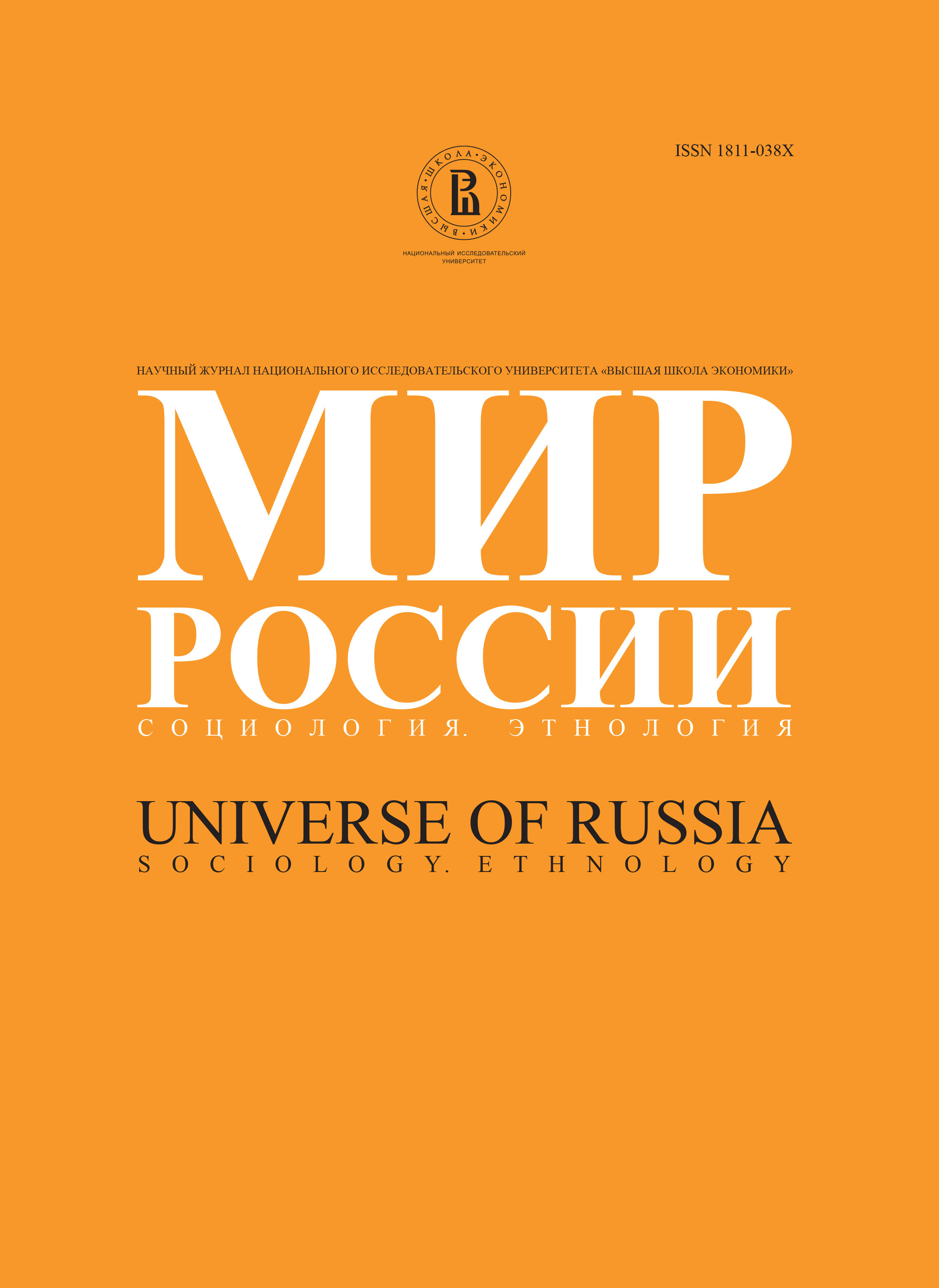Social, Economic and Spatial Self-Organization in Rural Area
Abstract
The article deals with several aspects of economic (branch and inter-branch), geographic (spatial) and social self-organization in rural area and in agriculture of contemporary Russia. The growth of production by the end of the 1990-es with marked reduction of state protectionism testifies to the results of branch self-organization. There occurred redistribution between different modes of production. Development of individual farms and the emergence of farmers changed the system of relations in rural area. The main result was the fact that large- scale enterprises were deprived of economic monopoly.Different combinations of capitalist and socialist principles of functioning are typical of large-scale enterprises; the types of these combinations are given in the article. The result of self- organization is strong stratification of agricultural enterprises. Prospects of weak enterprises are considered in the article. The crisis of the 1990-es brought into line the tillage and stockkeeping possibilities of farms with their real activities.
Enlargement of real manufacturers and the emergence of incapable remainder, which remains intact because of absence of bankruptcy procedure and need for collective farms among the population, influenced the space structure. Geographic self-organization leads to two contrary processes, which form contemporary rural space in Russia. On the one hand, the space stretch grows due to the transition of production from collective enterprises to individual farms. This spatial expansion is intensified by the region tendencies towards self-sufficiency. On the other hand, there is concentration of commodity production in separate centers which become smaller and smaller. The author of the article considers the fragmentation of Russian space, gives graphs, showing the dependence of the results of agricultural producers activities from the remoteness from town and the size of towns. The following conclusions are given: a) in view of intensification of the concentration of commodity production the intra-regional geography of agriculture proved to be quite steady during the years of crisis and reforms, because it reflects the type of spatial organization of agriculture rather than changing economic realities; and b) in the process of self-organization the agricultural production in the South and in the North (the latter includes suburbs and the peri phery) develops along different trajectories. The polarization of space grows in Non-Black earth region where the areas of the main agricultural producers are shrinking more and more towards big cities. In the South agricultural production is steadier and its distribution is to a greater extent connected with natural conditions. In the periphery of Non-Blackearth regions the decline of collective enterprises was partly compensated by the production in the individual sector. But it was just partly. The total production per territory unit in Non-Black earth region is all the same sharply decreasing from the center to the periphery.The author shows the process of strengthening of national factors of production in the period of crisis using the example of villages of different nationalities in Chuvashia. The model of spatial organization and evolution of rural area in Russia suggested by the author is founded on the most well-known general economic agrarian models of R.Bichanich and I.Tyunen and is based on the combination of three main factors: 1) natural conditions, 2) size of towns and distance to big cities, and 3) nationality of the population. All the rest, including labor force, its culture and skills, land-utilization, investment, territory arrangement is determined by these three main factors. The geographic model includes 5 stages of the evolution of space, which develops differently in Non-Black earth region and in the South part of European Russia. The author emphasizes that different regions and zones are at the different stages of the evolution of rural area, and the observed tendencies pull them to different sides, the author looks for the analogues in other countries. Russia has been rushing after the developed countries for a long time but its space doesn't allow it.
The main conclusion of the article is the following: the concentration of agricultural production is inevitable. It will takeplace in regions with favorable natural conditions, and in Non-Black earth region — near big cities, in spite of the sprouts of the suburbanization processes. Only in suburb and semi-suburb zones under the conditions of vacuum social and economic space of Russia agricultural enterprises will manage to find economic environment acceptable for them. Further decrease in rural population and agricultural lands in the Non-Black earth periphery (external and internal) is the fact that Russiawill not be able to avoid.
Spatial selectivity in the development of the collective sector depends on the social self- organization of rural communities. The author considers changes in these communities in the conditions of the deprivation of economic pivot — the large-scale enterprise. The author indicates the contradiction between reconstruction of organizational communal forms in the crisis period with regard for loss of the dominant role of enterprises and decomposition of communal relations.
In conclusion the author considers the concepts of location decease» and the framework of agriculture.Emigration from Russia According to Foreign Statistics.






